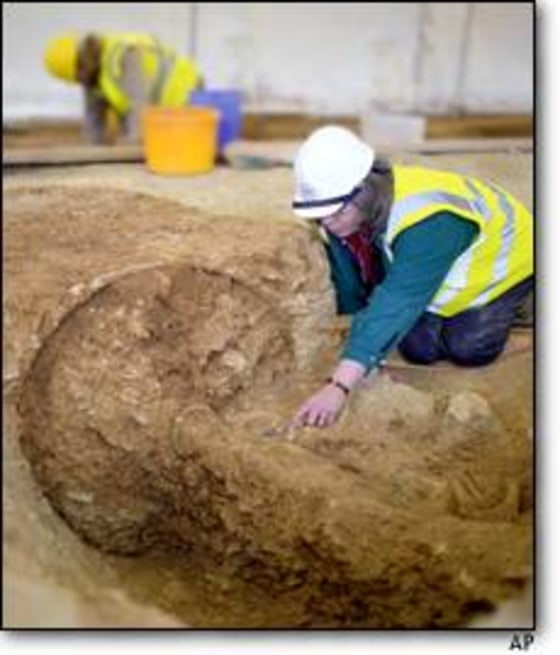After 2,500 years, the chariot’s wheels remain intact, complete with their iron tires. Inside lie the remains of a man in his 30s, believed to be a tribal chief. Workers constructing a highway through northern England found the two-wheeled chariot and its owner within a “rare and nationally significant” Iron Age burial chamber, archaeologists said Wednesday.
Oxford archaeology, an independent archaeological practice investigating the find, said it was the first chariot burial to be found so far inland. The similarity to contemporary French burials “indicates some form of contact and exchange between the continent [of Europe] and Britain during the middle Iron Age,” about which little is known.
“Insights gained will make a significant addition to our understanding of the burial rites of the period, and help us to understand a wide range of other elements of cultural exchange,” the group said on its Web site.
The remains were discovered by workers constructing the new A1 motorway at Ferrybridge in West Yorkshire, northern England.
Archaeologists are now excavating the chariot’s wheels, complete with iron tires, which are in a good condition. The wooden axle has completely decayed, but its position has been identified as a long narrow stain in the soil.
Inside the chariot, a man lies on his back, his legs flexed. He is surrounded by a number of well-preserved bronze and iron objects, some of which are likely to be horse harnesses.
Surrounding the grave are the remains of at least 250 cattle, which archaeologists say were probably slaughtered for a funeral feast.
Oxford Archaeology said from 500 B.C. to 400 B.C., chariot burial was practiced by a tribe known as the Arras, who came to England from France. The practice was reserved for high-ranking figures.
The chariot was placed in a large oval pit in the center of a square ditch, which would originally have been covered by a low earth mound.
Archaeologists say square ditches were more popular in continental Europe, and the latest find is most similar to others found in France’s Champagne-Ardennes region and the Mosel region of Germany.
